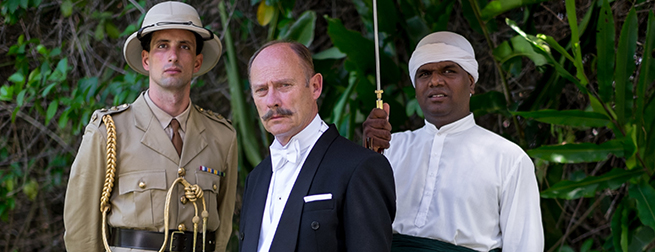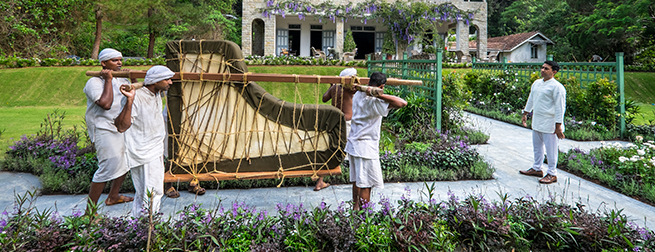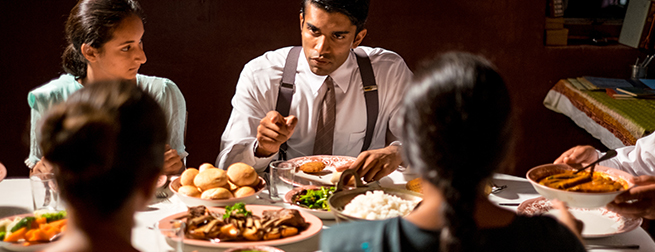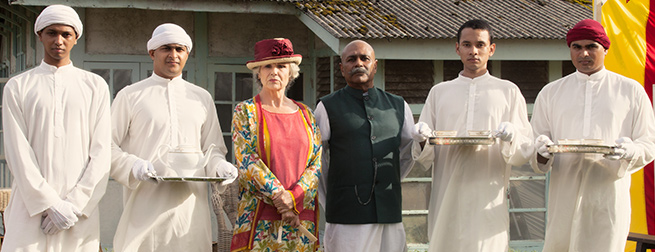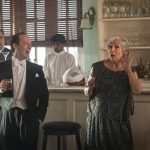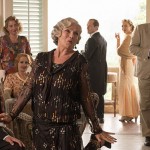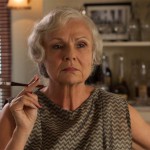7 things you need to know about the real ‘Indian Summers’
While American audiences continue to be in denial that their favorite British period drama, Downton Abbey, is entering its final series, they are warming to the thought that the current PBS Masterpiece series, Indian Summers starring Julie Walters, might just be the thing they need to take their mind off the inevitable, especially since Channel 4 in the UK has already commissioned a second series that will come our way in 2016. Indian Summers tells the story of the decline of the British Empire and the birth of modern India, from both sides of the experience.
https://www.youtube.com/watch?v=xsX6wPneoec
For those that may be a bit late to the Indian Summers party, series writer/creator Paul Rutman shares a few historical essentials to help you get ready for the raj, courtesy of PBS Masterpiece.
1. The Viceroy: Ruler of the Raj
“The big line in the sand is 1947 when India finally got independence, and the show is the journey to that point, over five watershed summers. The entry point is 1932. India was run by the Viceroy, who was effectively given the status of a king. We feature the Viceroy, Lord Willingdon, the one historic character in our show…He was very, very oppressive. The summer of 1932 was described as “the era of masked balls and black terror.” It was a time when, I think, the British were trying to turn the clock back to a time when empire was completely implacably strong and invulnerable.”
2. Summer in Simla
“In the summer, every summer, the capital would move up to Simla; Delhi would move up to Simla, and the entire administration would be run from this one tiny village in the Himalayas… For six months every year, thousands upon thousands of ‘coolies,’ as they were known—workers—would carry everything from every last vase, every piece of furniture, to pianos, up this giant hill, 2000 meters up. And you think ‘why did they do it?’ Was it on some level just because we could, a show of power, a show of strength?”
3. The Congress: Advocating for Home Rule
“On the opposing side, on the nationalist side, the great figurehead of course was Ganhdi, and Gandhi was imprisoned throughout the time of 1932 on the order of Lord Willingdon, but was still very, very powerful. He was the head of the Nationalists, broadly known as the Congress.”
4. Class & Power
“I think the Brits became obsessed, obsessed with class, to a degree that was surprising to the English people who came out. Simla was a world slightly held in aspic—they’re surprised and struck by how arcane and antique this world is; it doesn’t reflect Britain in 1935. It was a very particular kind of Britishness that was being clung on to with the old music, and they would insist on wearing white gloves for dinner, whatever the weather…The effort that the British made to keep this little England going in an environment that is completely inappropriate for it are extraordinary. And in a way, Simla embodies that.”
5. The Parsees: Aafrin Dalal & Family
“The Parsees are a small, very interesting community that did very well under the British…They had very ambivalent feeling about the British; on the one hand, there were very prominent pro-independence figures among them. On the other hand, they were fearful of what would happen to them once the British left, and they thought of the British as sort of a sheltering presence. The Parsees spoke English, which was quite useful to us, and it was kind of an opportunity to shine light on this slightly under-explored part of India.”
6. Expats’ Attitudes
“These are people who weren’t fantastically rich, but India afforded them eight, nine, sometimes 15 servants. There’s a book by Flora Annie Steel, which is basically a guide for memsahibs, the women going out there, and she said you really have to have a minimum of 15 servants; you can’t really get by without that. And she talked about how when you’re on a train, you can’t trust any local food that you’re offered, so people would get their servants to scrub the floors with disinfectant and then they’d bring their own [portable] gas stove to make their tea, to make this kind of hermetically sealed world.”
7. The British
“Imperial India, British India had many aspects. Sure, there was a political side, but also a business side. Many people went out there and made money on the railways, or with cotton, or growing tea…One of the strange things about Empire was actually there were quite a lot of Scots who came out, quite a lot of Irish who came out, quite a lot of Welsh who came out, and you could almost say that one of the things that kept the union together, one of the things that kept Britain together, was this idea of Empire.”
Now, you should be all set for next Sundays continuation of Indian Summers as part of PBS’ Masterpiece series. The series runs through Sunday, November 22 at 9p ET/8p CT with series 2 coming in 2016.
In: Drama

